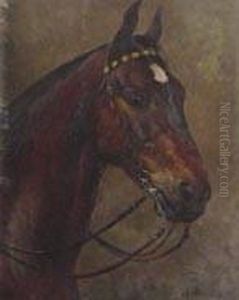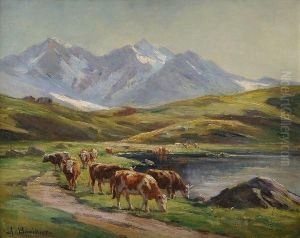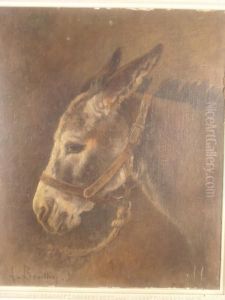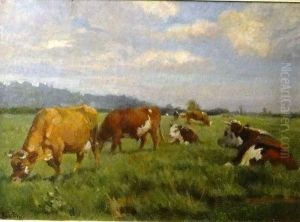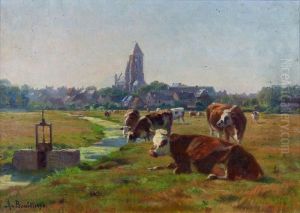Aimable Bouillier Paintings
Aimable Bouillier was a 19th-century French artist known for his landscape paintings and his role as a teacher. Born in 1799, he lived through a period of significant social and political change in France, which included the aftermath of the French Revolution, the Napoleonic Wars, and the shifts of the Bourbon Restoration, July Monarchy, Second Republic, Second Empire, and the beginnings of the Third Republic.
Bouillier's artistic career began during the Romantic period, a time when artists sought to express emotion and individualism, often through dramatic and exotic subjects. However, Bouillier preferred to focus on the serene and pastoral aspects of the French countryside, capturing the changing qualities of light and atmosphere in his landscapes. His work reflected a growing appreciation for the natural world among artists of his time, which was also seen in the works of the Barbizon School, a group of painters who influenced the development of Impressionism.
Although Aimable Bouillier is not as widely recognized as some of his contemporaries, he nonetheless contributed to the art world as a teacher. He educated a number of students who would go on to have their own influence on the history of French art. Throughout his life, Aimable Bouillier exhibited his work at various salons and exhibitions, enjoying a moderate level of success and recognition among art patrons and critics.
Bouillier's style evolved over the years, but he maintained a commitment to realism and the careful study of nature. His landscapes often feature a harmonious blend of colors and a delicate interplay of light and shadow, showcasing his skill in capturing the mood of a place. Aimable Bouillier passed away in 1881, leaving behind a body of work that, while perhaps not revolutionary, beautifully encapsulates the tranquil essence of the French landscape during a time of great change in both the arts and society.
